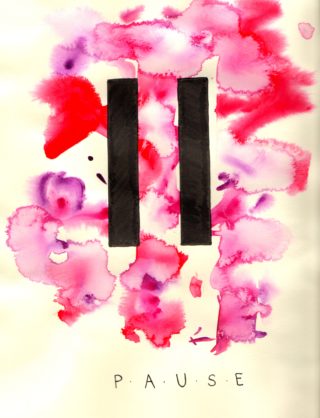Why is this important?
We need space in our lives in order to reflect and decide how to most effectively respond to what life offers us. Coach and teacher Leslie Hershberger recommends the pause as a way of recalibrating.
“The Pause is just so damn powerful. I feel like a Pause evangelical these days as it’s so desperately needed in these over-stimulated times. It’s a way to touch a place of relief and groundedness inside yourself which offers a spacious clarity about what you can do and where you can let go.”
You may be wondering how you will possibly find the time to add pauses to your already full days. There is too much to do, too little time. If you are feeling this way, then you may have to step back and decide what’s most important and what to let go. Adding short pauses may be one way to discern.
Stanford professor BJ Fogg recommends beginning with “tiny habits, “simple changes that are easy and can be done in less than 30 seconds. Start small, adding a 30-second pause after something that you already do every day (this is your cue or prompt); perhaps after every meal.
For those 30 seconds, notice where you are, what’s around you, and what you’re feeling. Notice the sights, smells, and sounds. Or, when you’re photographing, pause for 30 seconds before you click the shutter. Think about what stopped you, what you’re feeling, and how to compose. Only then do you click.
The purpose of pausing is not the pause itself. It’s what you experience during the pause.
The point is to have the space to be able to touch into a place inside of you, that groundedness that Leslie speaks of, a place of stillness below the surface of your everyday reality. It’s where your core self resides, and once there you can tap into her wisdom. Once you know what that space feels like, you can go there at will, even in the midst of doing.
Your pausing becomes as easy as breathing, a way of being, a part of who you are. You won’t have to think about it. Even with your photography, you’ll be able to quickly intuit what stopped you and how to compose.
The Domino Effect of Pausing
Entrepreneur and writer James Clear speaks about how adopting one small habit leads to the development of other positive habits in this post, The Domino Effect. He says,
There is an astounding interconnectedness between the systems of life and human behavior is no exception. The inherent relatedness of things is a core reason why choices in one area of life can lead to surprising results in other areas, regardless of the plans you make. ~ James Clear
By learning to make pausing an integral part of your life, you’ll experience the power of the pause – greater engagement with life, better relationships all around due to your attention, and a life centered on what’s most important to you. What could be better than that?
Have you made pausing a habit? How did you do it?
